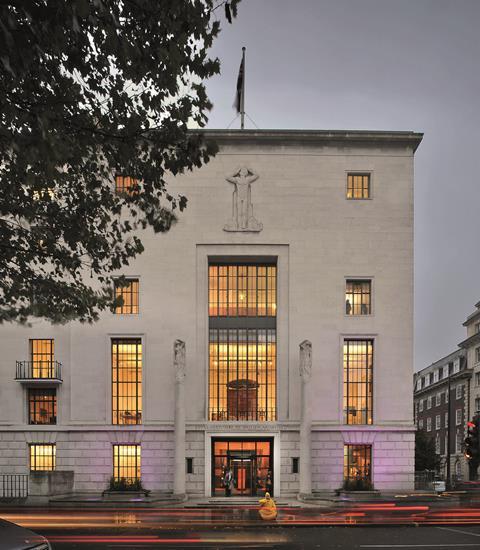- News

All the latest updates on building safety reformRegulations latest
- Focus
- Home
- News
- Focus
- Comment
- Events
- CPD
- Building the Future
- Jobs
- Data
- Subscribe
- Building Boardroom
Can anyone save the RIBA?
By Elizabeth Hopkirk2021-08-18T05:00:00

Source: Philip Vile
With a new president takes over next month, many are asking what is next for the organisation

Source: Philip Vile
Shortly before sunset on a chilly March evening last year, a privy counsellor passed through the gates of Buckingham Palace brandishing a bundle of papers to be approved by the Queen. Among them was an application to amend the RIBA’s royal charter, a request only granted four times in the 183 years since William IV conferred the crown’s prestige on the institute.
It was an archaic formality, though a legal necessity, and it represented – RIBA insiders hoped – the last step on a long journey to reform. That night they could have been forgiven for thinking they had successfully steered the stubborn beast to the dawn of a new, modern age.
Yet privately some might have felt an uneasy sense of foreboding. That day supermarkets had begun rationing food in the face of shelf-emptying panic and within a week the prime minister would order schools to close and the over-70s – the monarch included – to hunker down.
…
Already registered? Login here
To continue enjoying Building.co.uk, sign up for free guest access
Existing subscriber? LOGIN
Stay at the forefront of thought leadership with news and analysis from award-winning journalists. Enjoy company features, CEO interviews, architectural reviews, technical project know-how and the latest innovations.
- Limited access to building.co.uk
- Breaking industry news as it happens
- Breaking, daily and weekly e-newsletters
Get your free guest access SIGN UP TODAY

Subscribe now for unlimited access
Subscribe to Building today and you will benefit from:
- Unlimited access to all stories including expert analysis and comment from industry leaders
- Our league tables, cost models and economics data
- Our online archive of over 10,000 articles
- Building magazine digital editions
- Building magazine print editions
- Printed/digital supplements
Subscribe now for unlimited access.
View our subscription options and join our community


















